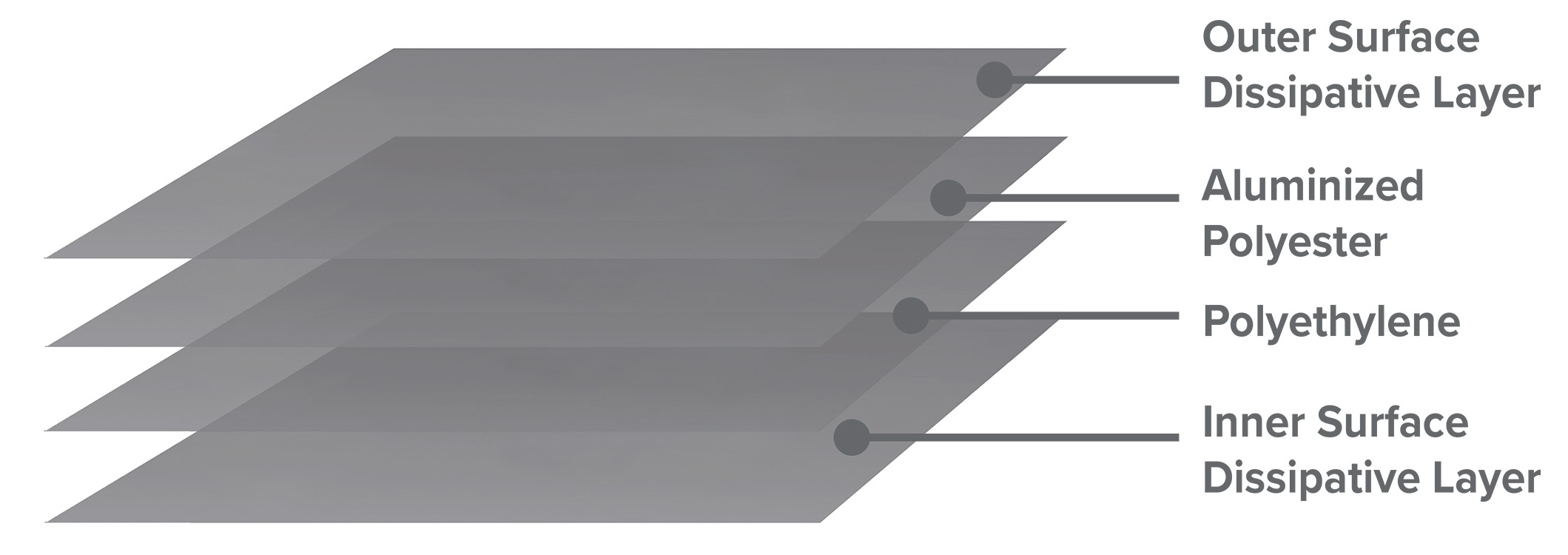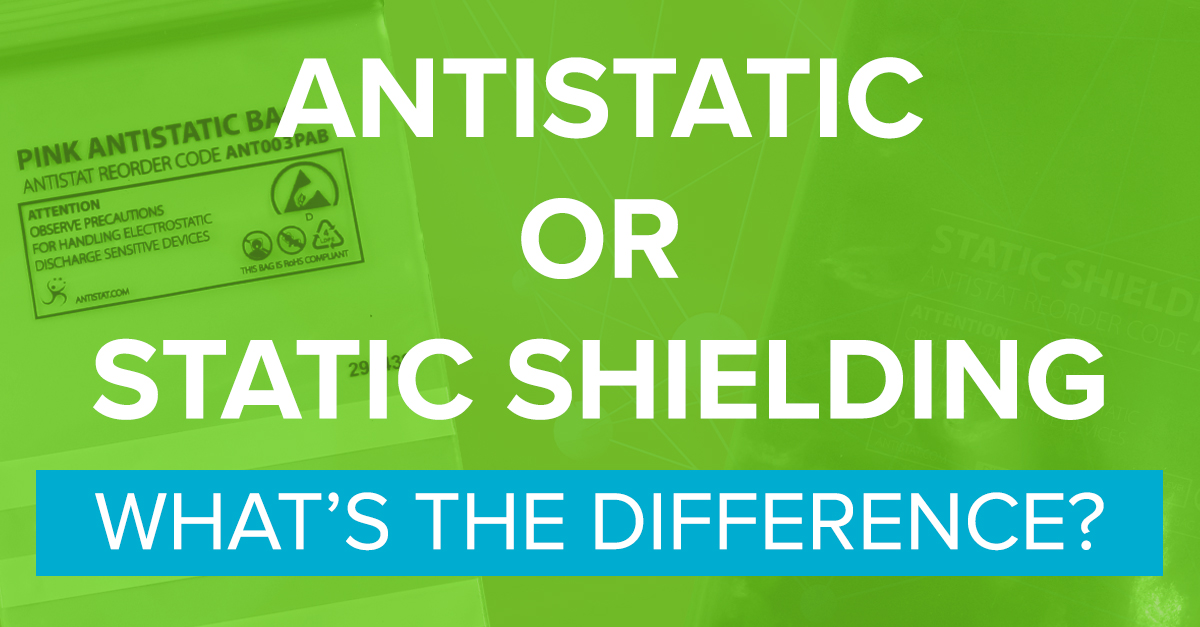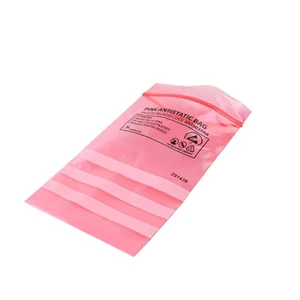ESD packaging, such as antistatic bags or static shielding bags, are some of the most important safety products used in manufacturing environments. Without these specialised packaging solutions, it would be virtually impossible to safely transport products and components from the production line to their final destination. Standard plastic bags are commonly made from polyethylene which cannot protect ESD sensitive devices. Antistatic bags and shielding bags are specifically designed using materials that serve different purposes in protecting electronic components and devices from electrostatic discharge (ESD).
What are the main differences between the two?
Purpose:
- Antistatic Bags: Antistatic bags are designed primarily to prevent the build up and discharge of static electricity. They are used to contain non ESD-sensitive items within an EPA (ESD Protected Area) such as screws, bolts, fastenings etc. The bags reduce the risk of static damage as they do not produce a charge. They do not protect the contents from ESD.
- Shielding Bags: Shielding bags are designed to provide protection against static electricity both outside and inside the bag. They offer a Faraday cage effect, dissipating the charge along the surface of the bag and shielding the contents sealed inside.
Material:
- Antistatic Bags: Antistatic bags are typically made using blow-moulded LDPE polyethylene with unique antistatic additives ensuring a low surface resistance. These materials allow the bags to quickly dissipate any static charge on the surface, reducing the risk of ESD damage.
- Shielding Bags: Shielding bags are constructed with multiple layers of materials, including metallic layers (aluminium) and insulating layers. These layers provide the shielding properties necessary to block or reduce charges both inside and outside the bag.
Protection Level:
- Antistatic Bags: Antistatic bags are effective in preventing ESD damage, but they do not provide significant protection against ESD.
- Shielding Bags: Shielding bags offer protection against ESD. Ideal when it is critical to shield electronic components from ESD.
Structure of Pink Antistatic Bag

Structure of Static Shielding Bag

The standard test (ESD Association Standard Test Method ANSI/ESD STM11.31-2018) for shielding demonstrates the difference between the different bags: shielding bags will generally stop 97% of 1,000 volt pulse applied to the outside of the bag from reaching the inside and its contents. A pink antistatic bag will not.
To summarise, the primary difference between antistatic bags and shielding bags lies in their intended purpose and the level of protection they provide. Antistatic bags focus on ESD prevention within your EPA; shielding bags are designed to protect sensitive electronic products and components from ESD during storage and shipping. The choice between them depends on the specific needs and requirements of your electronic components or devices.
For more information or advice, contact one of our specialist team today. CLICK HERE













